
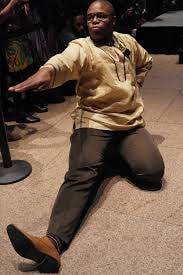
What is voguing? It’s much more than just a dance style that was brought to mainstream audiences by Madonna’s song “Vogue” from the 1990s. Voguing is a unique dance style used by drag queens at drag balls and dance competitions. It is an important part of the history of both drag and queer culture.
What Are The Roots of The Vogue Dance Style?
Voguing is decidedly queer. Its roots intersect with Black and Latinx queer communities, particularly in the New York ballroom scene. The evolution of this historical form of dance from queer only spaces to mainstream society is an interesting story that deserves to be told.
The Ballroom Scene: The Birthplace of Voguing
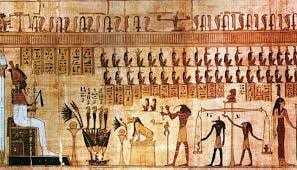
The queer ballroom scene can be traced back 100 years to Harlem. In the 1920s, the Harlem ballroom scene became a safe haven for Black and Latinx queer contestants who faced social marginalization. Rooted in the Harlem Renaissance, this was an artistic movement that gave space to dancers and drag queens to showcase elaborate pageantry and skills via balls. Eentually, the dance form known as voguing was developed. It was created drawing inspiration from a wide range of sources that included Egyptian art and fashion magazines like Vogue.
Legends like Paris Dupree pioneered some of the original voguing techniques that are still popular today. They were inspired by the poses used by high-fashion runway models, and even the depictions in Egyptian Hieroglyphs. Dancers blended sharp angles, intricate hand gestures, and dramatic poses.
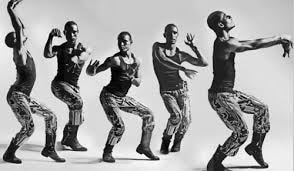
These, combined with rigid movements led to a new dance style that exuded defiance and self-expression. Over the next decades three distinct styles of voguing emerged – new school vogue, old school vogue, and vogue femme. Vogue fem stood out as it involved more graceful movements with exaggerated hip movements.
Pioneers like José Xtravaganza and Will Ninja also helped propel voguing battles into mainstream culture, even influencing high fashion legends like Anna Wintour. The 1990 documentary Paris Is Burning highlighted how this scene had mainstream impact.
Today, voguing is a global phenomenon, with dancers from stretching from New York to the West Coast keeping the legacy alive through shows featuring various categories and legends competitions.
Ballroom Scene – A Safe Space For Trans Women And Queer POC
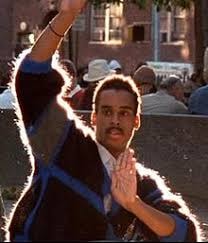
The Harlem scene provided a safe space for trans women and queer POC, where many of them did not have that in their homes or families of origin. For them it offered a refuge from the discrimination they faced in mainstream society. This dance style born in African American history, allowed marginalized communities to express themselves through intricate dance moves.
As innovators like Willi Ninja and José Xtravaganza refined the style, an emerging generation of drag queens continues to honor the scene by building on these original inspirations, keeping its legacy alive in New York City and beyond.
Ballrooms – Where Competition And Celebration Thrive
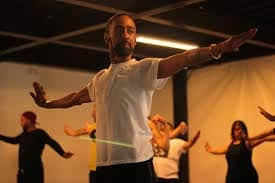
The vogue scene thrives on both competition and celebration, where vogue dance and vogue femme are used to showcase talent and hard work. Dancers execute sharp dance moves, and arm and leg contortions, and wow audiences with precise hand and wrist illusions, all inspired by the poses seen in Vogue magazine and other famous fashion magazines, martial arts, and runway fashion models.
In New York, legends like José Xtravaganza created a standard that others built on. Contestants serve beat face and throwing shade is transformed into a form of artistic expression. Beyond competition, the ballroom scene remains a joyous expression of identity in the face of societal marginalization, where the openly gay community reclaims space once denied to them by the imperial society.
Ballroom Culture: More Than Just Dance
Ballroom houses emerged as an important part of this culture. They represent much more than teams in vogue dance battles—they are the chosen families for Black, Latinx, and other queer individuals who often face rejection from their biological families. These houses came to be in New York during the Harlem ballroom scene.
These houses provided a crucial support system for marginalized communities. By offering mentorship, shelter, and a sense of belonging they gave LGBTQIA+ what they weren’t getting elsewhere.
Each house is has a leader, a Mother who is committed to guiding members in life as well as the ballroom scene. They mentor upcoming dancers in styles like vogue femme, and coach them in techniques such as throwing shade to establish competitive dominance and also fostering personal growth. These families support members as they compete fiercely in fashion, dance, and more.
For so many, it is these houses that provide stability and love, by countering the oppression of mainstream society. Houses exemplify how ballroom is a space where the openly gay and trans community members can thrive by redefining family on their own terms. Today, the legacy of ballroom houses has been recorded via documentaries, articles, and other media sources.
Vogue Dance: A Form of Queer Expression
Voguing is a competitive, expressive art. However, it is much more than that. It is an act of resistance and protest too.
The Development of Voguing as a Form of Self-Expression and Resistance
Yes, voguing emerged in the Harlem ballroom scene as a new dance form that allowed Black and Latinx queer communities to carve out a space for themselves despite marginalization and rejection.
Voguing became a form of resistance—a way to challenge societal norms, unapologetically assert identity, and find empowerment via movement. Within ballroom culture, voguing was a way to engage in a defiant, unapologetic form of self-expression..
Different Styles of Voguing
Over time, voguing evolved into three distinct styles:
The old way of voguing came into style before the 1990s. It was defined by rigid, almost geometric poses where both precise arms control and graceful movement were required. It was easy to see how the dancers were inspired by the poses of fashion models. This old way emphasized symmetry and clean lines. The dramatic poses evoked images of Egyptian Hieroglyphs.
From the 1990s on the new way added limb contortions, extreme flexibilities, and intricate hand and arm movements. New dancers emphasize technical proficiency with precision and control. They even added elements derived from martial arts and one leg spins.
Finally, there is Vogue Fem. This is a fuid style that is meant to represent femininity through exaggerated hip movements, fluidity, and catwalk influence. This style is heavily emraced by trans women and femme-presenting individuals who express themselves through its graceful yet powerful execution.
Influence of Iconic Figures
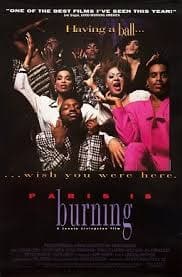
Legends like Willi Ninja, often called the “Grandfather of Vogue,” deserve credit for the work they did in transforming voguing into a global phenomenon. By blending original voguing techniques with martial arts-influenced precision and elegance, he and others created something entirely unique to queer culture. Today, voguing remains a global movement, that celebrates its roots while continuing to evolve as an art form and act of revolution.
Where to Experience And Learn More About Vogue Dancing
The story of voguing deserves to be told and explored. Fortunately, many resources have been created to educate folks about this vibrant dance form. Start with a documentary like the above-mentioned Paris is Burning. It’s a fascinating exploration of the scene’s history and spotlights pioneers like Jose Xtravaganza.
For those who would like to try voguing, there are dance studios in major cities like New York And Los Angeles that offer classes. Students can learn arms control, hand performance, and floor work.
Not in a major metropolitan area? You can find tutorials from ballroom legends on platforms like Instagram and YouTube. You may even be able to find workshops at queer-friendly cultural centers where educators are eager to introduce this art form to new generations.
Today, you can even find voguing in mainstream media. Just check out RuPaul’s Drag Race where many contestants take part in challenges that allow them to showcase their voguing abilities.
Even institutions like the National Museum of African American History and Culture recognize the influence of ballroom and its impact on the worlds of dance, fashion, and LGBTQIA+ culture.
To get a truly immersive experience, there is no substitute for attending a live ball. This is the way that voguing and ballroom culture was meant to be seen.





